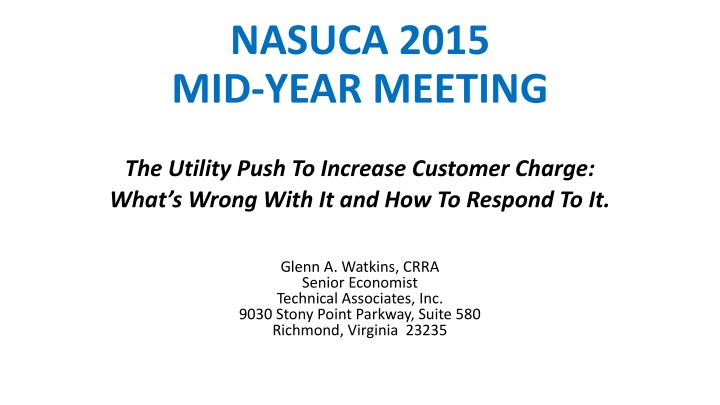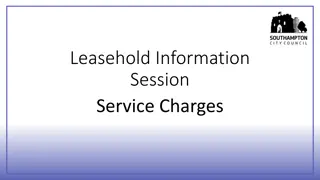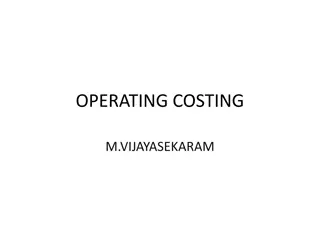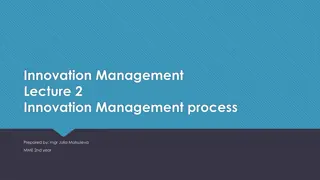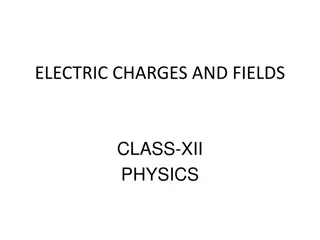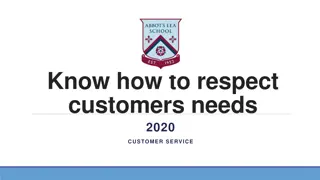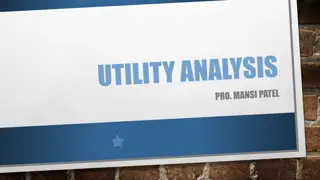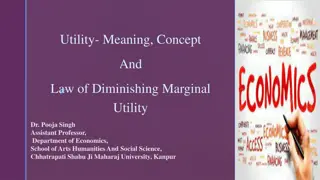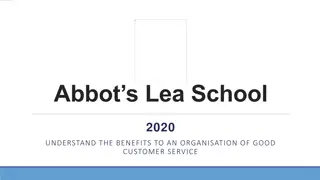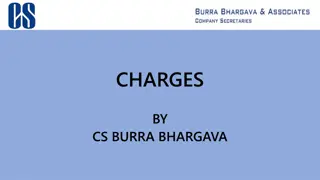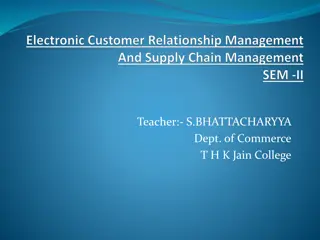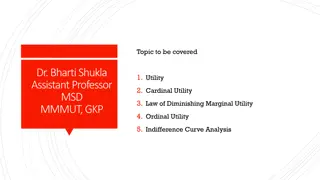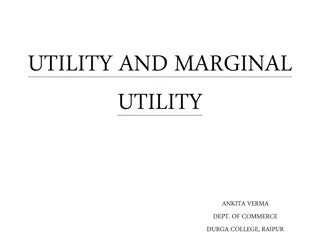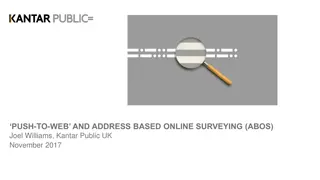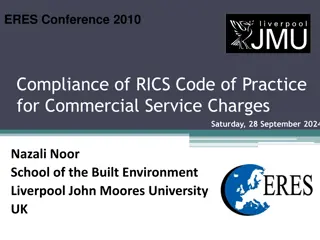Analyzing Utility Push for Increased Customer Charges
This content delves into the utility industry's trend of pushing for higher customer charges and its implications. It questions the use of high customer charges as a substitute for revenue decoupling, examines their impact on energy efficiency policies, and debates their alignment with competitive pricing principles. The discussion also covers the effects of increased customer charges on low-volume and low-income customers.
Download Presentation

Please find below an Image/Link to download the presentation.
The content on the website is provided AS IS for your information and personal use only. It may not be sold, licensed, or shared on other websites without obtaining consent from the author.If you encounter any issues during the download, it is possible that the publisher has removed the file from their server.
You are allowed to download the files provided on this website for personal or commercial use, subject to the condition that they are used lawfully. All files are the property of their respective owners.
The content on the website is provided AS IS for your information and personal use only. It may not be sold, licensed, or shared on other websites without obtaining consent from the author.
E N D
Presentation Transcript
NASUCA 2015 MID-YEAR MEETING The Utility Push To Increase Customer Charge: What s Wrong With It and How To Respond To It. Glenn A. Watkins, CRRA Senior Economist Technical Associates, Inc. 9030 Stony Point Parkway, Suite 580 Richmond, Virginia 23235
Issues: Issues: Are high customer charges being used (or should they be used) as a substitute for revenue decoupling? Are high customer charges contrary to energy efficiency policy and do they encourage increased use? Is the push to recover fixed costs through fixed charges consistent with efficient competitive pricing principles? Should increased customer charges be counter-balanced with ROE reductions? Do increased customer charges interact with tiered volumetric rates? What impact does the customer charge have on low volume and low income customers?
Are High Customer Charges Being Used (Or Should They Are High Customer Charges Being Used (Or Should They Be Used) As A Substitute for Revenue Decoupling? Be Used) As A Substitute for Revenue Decoupling? If most (or all) base rate revenue is collected from fixed monthly customer charges, revenue is guaranteed and therefore is decoupled by definition. If a regulatory agency adopts a decoupling policy, volumetric- based mechanisms are far more equitable and are more consistent with energy conservation policies.
Are High Customer Charges Contrary To Energy Efficiency Are High Customer Charges Contrary To Energy Efficiency Policy and Do They Encourage Increased Use? Policy and Do They Encourage Increased Use? Short answer --- Yes. Price Signals Price Elasticity
Is The Push To Recover Fixed Costs Through Fixed Charges Is The Push To Recover Fixed Costs Through Fixed Charges Consistent With Efficient Competitive Pricing Principles? Consistent With Efficient Competitive Pricing Principles? Short answer --- No. Public Utilities are businesses. Competitive business activity provides the greatest benefit to consumers and results in the most efficient utilization of resources. Regulation should serve as a surrogate for competition. The notion that fixed costs should be recovered through fixed charges is at odds with accepted economic theory, as well as business practices in competitive markets.
From an academic perspective, economic theory tells us that in competitive markets, prices are equal to marginal costs. - marginal cost is defined as: the incremental change in cost as a result of an incremental change in output. - Because marginal costs measure the changes in costs with output, short-run fixed costs irrelevant in efficient pricing. This is because fixed costs are reflected within a firm s production function. are - In summary, utility marginal costs are volumetric in nature, with the exception of those costs required to connect and maintain an individual customer s account. In practice, competitively-based prices are almost universally volumetrically priced. - many industries are faced with high fixed costs. - industries that were once regulated are now price volumetrically. - airlines - railroads - motor carriers - products pipelines Arguments that fixed costs should be recovered from fixed charges have not been supported with a single shred of academic support. - this recent argument (over the last 8 or 10 years) stems from the FERC s use of Straight-Fixed Variable pricing for natural gas interstate transmission service.
SFV pricing was established in FERC Order 636. However, SFV pricing was implemented not as a matter of efficiency or conservation, but rather, the opposite. SFV pricing was a result of national policy to encourage the increased use of domestic natural gas and reduce our Nation s dependence on foreign oil. Specifically, FERC Order 636 states: The Commission s intent is to further facilitate the unimpeded operation of market forces to stimulate the production of natural gas . . . [and thereby] contribute to reducing our Nation s dependence upon imported oil . . . Moreover, the Commission s adoption of SFV should maximize pipeline throughput over time by allowing gas to compete with alternative fuels on a timely basis as the prices of alternate fuels change. The Commission believes it is beyond doubt that it is in the national interest to promote the use of clean and abundant gas over alternate fuels such as foreign oil. SFV is the best method for doing that.
Should Increased Customer Charges Be Should Increased Customer Charges Be Counter Counter- -Balanced With ROE Reductions? Balanced With ROE Reductions? Concept of Risk and Return - Fixed charges = guaranteed revenue = lower risk - Differential class rates of return
Do Increased Customer Charges Interact Do Increased Customer Charges Interact With Tiered Volumetric Rates? With Tiered Volumetric Rates? Depends on the rate structure Policy Higher customer charge with Inverted-Block rates Lower customer charge with Declining-Block rates Essential Service Minimum bill rate structure
What Impact Does The Customer Charge Have On What Impact Does The Customer Charge Have On Low Volume And Low Income Customers? Low Volume And Low Income Customers? Intra-class Cross Subsidization this argument is tied to the misguided belief that small volume customers do not contribute their fair share towards the recovery of the utility s fixed costs. remember the concepts of marginal cost, as well as cost causation. load factors tail wagging the dog seasonality
CONCLUSION CONCLUSION Matter of Regulatory Policy Reasonable Fixed Charges
